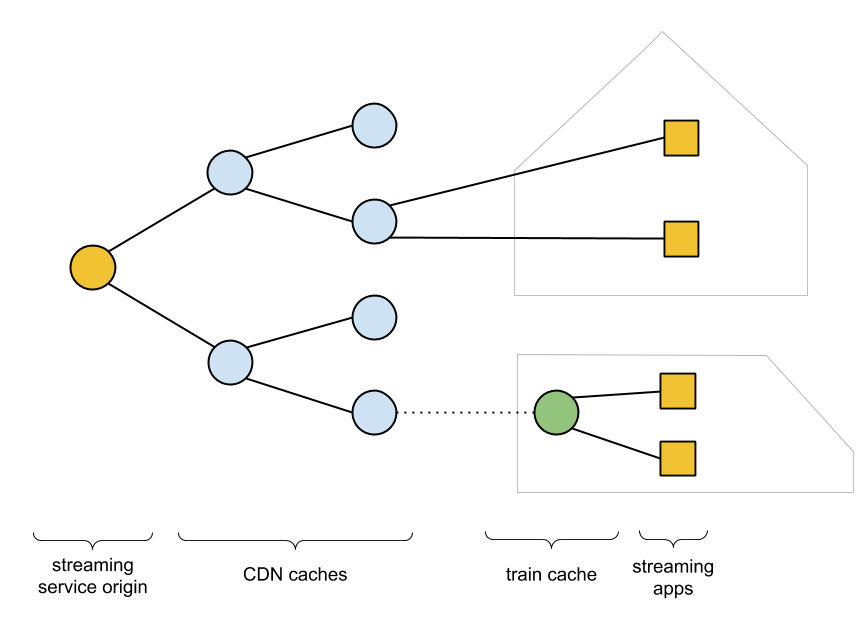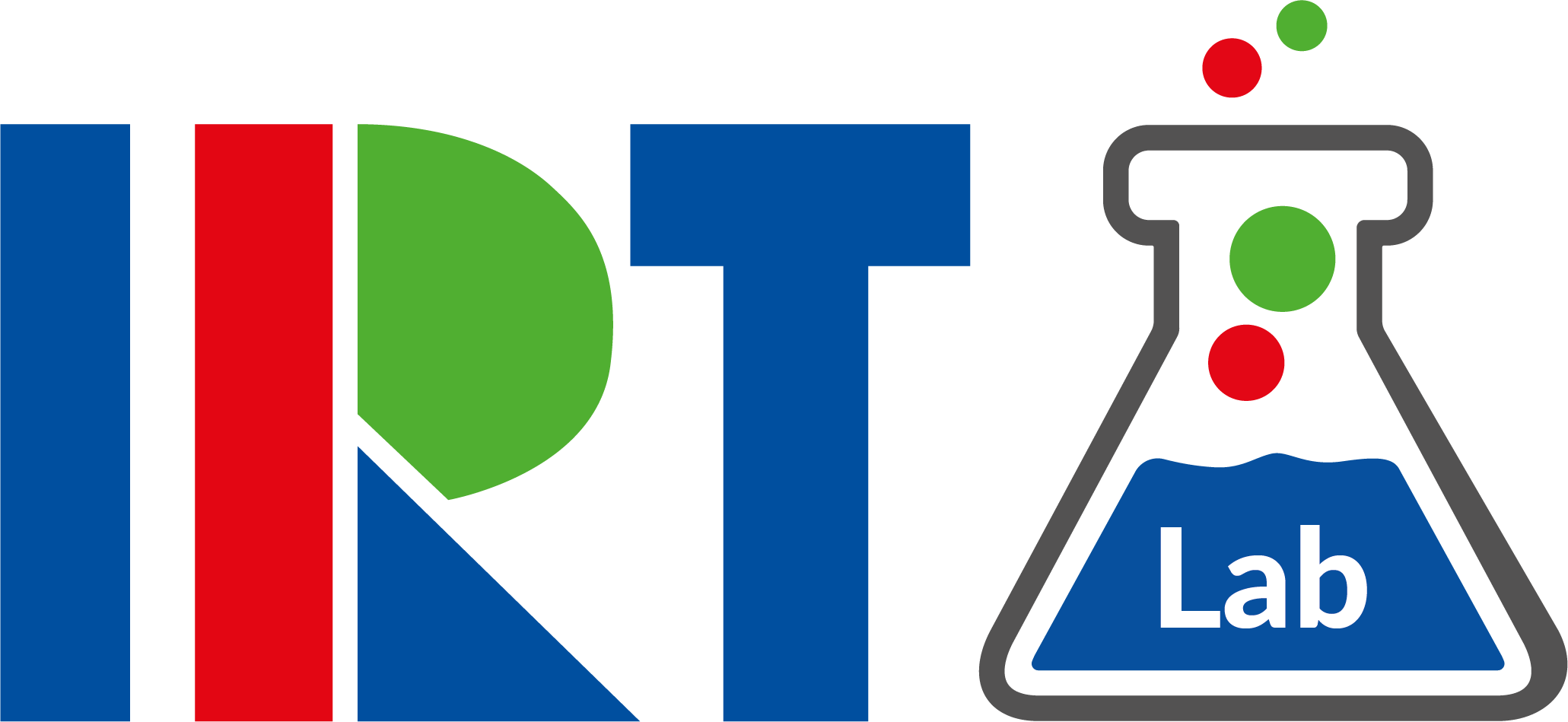In the EU-funded R&D project 5G-VICTORI we aim to improve the availability and quality of video-on-demand (VoD) streaming services (such as “Mediathek”) for train passengers. In a series of articles we want to keep you informed about our activities in this area. In this article we explain the technical approaches we are investigating. How can 5G help and what can we achieve already before a wider availability of 5G? We will briefly make you familiar with the 5G-VICTORI project and outline challenges for our future research.
Why we do this?
Rail transport is a key component of sustainable future mobility concepts. A major advantage of traveling by train is that passengers can use the travel time for themselves, for example to work, read or watch videos. To do this, however, passengers typically need to download the video content onto their playback device before their journey. This limits the suitability for everyday use. Media portal servers aboard the train can be an alternative. However, existing offers such as “Maxdome on Board” only update their content catalogs at relatively long time intervals and passengers have to install an extra app to take advantage of the service.
Streaming videos over the Internet can be a frustrating experience if the train passes through areas with insufficient mobile network coverage. This does not change if passengers use the train’s on-board WiFi, because it also connects to the Internet via mobile networks. In addition, all WiFi users on board share the same Internet access and compete for the overall available bandwidth. It is unlikely that the gaps in mobile network coverage will be filled with substantial bandwidth in the future, as operation is simply uneconomical for mobile network providers in many of the uncovered areas. In the foreseeable future, it will therefore not become easier for streaming services to reach their audiences on trains. That is why our ambition is to make video streaming independent of the mobile network.
How we do it?
Streaming services usually deliver their content via so-called content delivery networks (CDNs). These are Internet overlay networks of servers, so-called caches, at strategic nodes of the Internet. The caches hold copies of content so that it reaches the user faster. Furthermore, CDNs enable a higher level of service reliability and can be designed to optimise the distribution of network load and transmission costs. Our approach is to extend the streaming service’s CDN to trains. The trains will be equipped with caches. These are filled with content via so-called data showers, which, in our case are dedicated local 5G data connections with data rates of up to 20 GBit/s. Data showers will be installed at selected locations along the train route — initially at train stations.
This approach has the advantage that passengers can use the regular app of a streaming service, which they might have already installed on their personal device – such as a regular Mediathek app. Once connected to the on-train WiFi, users will experience high-quality on-demand video without any strain on their mobile data budget. Due to the possible update rates, streaming services can also offer current affairs programmes such as news.

Simplified topology: streaming content gets to people’s households via a CDN, which gets extended by caches on trains. Caches on trains are filled via local 5G radio links in train stations.
Why 5G?
For several reasons, 5G is an interesting transmission technology for keeping the caches up-to-date. Firstly, it enables higher data rates than other wireless transmission technologies. For example, data rates of up to 10 GBit/s have been measured for the latest generation of WiFi IEEE 802.11ax under ideal conditions. These conditions will, however, not be met in crowded environments such as railway stations. 5G is operated in licensed spectrum and many things can be done to offer much better connectivity under difficult conditions. When operated in very small cells, e.g. in mm bands, other users will not mitigate the connection. Another option is to operate 5G as a private network (such as the 3.8 Ghz band). Further to this, the so-called network slicing feature of 5G deployments can be used. Network slices are separate segments in the radio network that provide guaranteed quality of service parameters, such as network delay, data rate or availability. Each in their own network slice, different services can coexist on the same physical network without interfering with each other.
In general, 5G equipment for our data shower can thus be shared with other services, even if they are critical to rail operations, such as rail signaling or passenger information system. The 5G infrastructure can therefore cater for the needs various business models in parallel, which is interesting from an economic point of view. In the 5G-VICTORI project we want to test exactly this coexistence of different services with different requirements on the communication network. Together with an international consortium of 25 partners, we want to test applications from the areas of media delivery, transportation, Smart Energy and Industry 4.0 on 5G test beds in Bristol (UK), Patras (GR) and Berlin.

5G-VICTORI ecosystem (original source: https://www.5g-victori-project.eu/)
What’s next?
For the actual realisation and the practical use of our system a number of exciting and non-trivial questions arise. For example, how do we deal with limited memory resources on the train? If many streaming services use our system, storage turns into an in-demand, scarce and therefore expensive resource. Streaming services can therefore only offer a selection of their content catalogue, which ultimately leads to the question of what content will passengers be interested in during the journey? Automatic content selection based on the processing of usage data by machine learning algorithms are the subject of future studies. In the medium term, however, these will not substitute editorial choice. A streaming service may be particularly interested in offering certain niche content, for example because they contribute to the branding of the service or because they are crucial for the fulfillment of the service’s mission. An exciting task is therefore also the question of how editors and machine learning algorithms can work together in a beneficial and meaningful way?
Caches are only suitable for storing static content. This is content that does not differ between users and the respective usage. Examples are: images and videos, as well as their metadata, but also documents such as HTML, CSS and JavaScript, unless they are not pre-rendered on the server for the individual usage context. Dynamic content, on the other hand, is generated and delivered by the server with each call individually. Dynamic content includes, for example, personalised content or the result lists of search queries. How do we deal with these types of content? For example, can we pre-fill the cache with results of frequently asked search queries? Can we run local instances of the web services responsible for personalisation on the train? How do we ensure consistency of information, for example: user profile in the cloud vs. local (possibly modified) offline copy of the user profile.
Another challenge is the provision of live content. Since we cannot cache content of the future, our highest demand can only be to provide smooth playback while keeping the delay to real time as small as possible. We see an approach to this in the development of a prediction model for the mobile network quality along the train route. The model can be used to plan the roll-out of private 5G network infrastructure into gaps in coverage of public 5G networks. Also it can be used to optimise the buffer strategy of the video players in streaming apps. Before addressing these challenges, we are currently in the process of developing a system prototype comprising a data shower, local cache on train and a graphical configuration interface for the cache contents. This basic version of our concept will allow us gaining first experiences in field tests.
In upcoming articles we will keep you up to date on these topics and go deeper into
certain technical detail. If you can not wait for more details on the technical
concept or our plans for future work check out our paper “Improving media
streaming services for train passengers with 5G” which will soon be
published in the proceedings of the ACM IMX 2020 conference.
A
pre-release version of the paper can be downloaded here.

Acknowledgement
This project has received funding from the European Union’s Horizon 2020 research and innovation programme under grant agreement No 857201.


